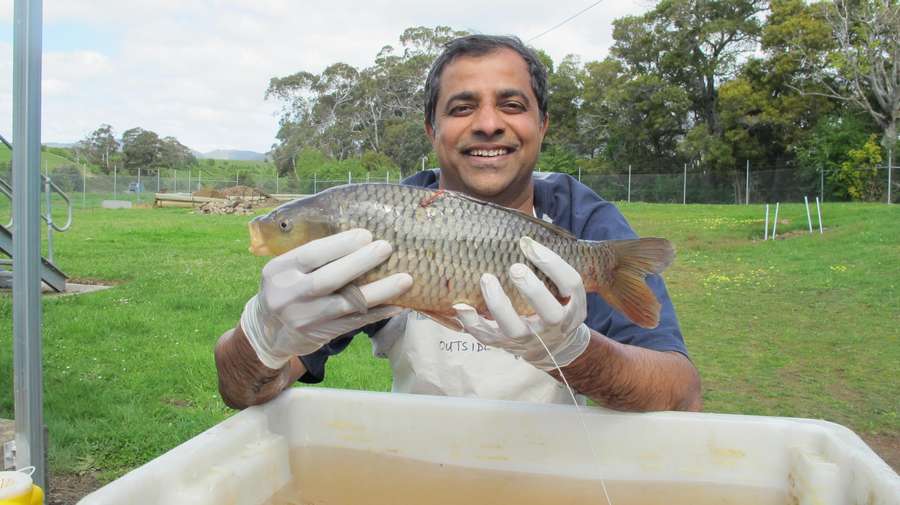Sterile carp receive radio transmitters in ongoing fight to eradicate

In an exciting breakthrough male carp that have been sterilised are being implanted with radio transmitters. Juvenile male carp, captured from Lake Sorell, were identified using ultrasound in trials undertaken last summer and then allowed to mature to a point where they were producing sperm in autumn. A number of fish were then either surgically or chemically sterilised. The fish were allowed to recover over winter with regular checks to monitor their condition.
The warming water temperatures in spring would normally see an increase in sperm production as the fish prepare to spawn. This has allowed a check to be made to test the success of the sterilisation techniques that have been applied.
Today carp that have been monitored and identified as sterile were implanted with radio transmitters containing an individual radio frequency built by Advance Telemetry Systems. The “Judas fish” will be held for a week to ensure recovery at which point they will be released back into the wilds of Lake Sorell. Over the coming months the sterile fish will be monitored alongside non sterile transmitter fish to ensure that the sterilisation process has not altered their behaviour as they will become a vital part of the strategy to catch the last female carp from the lake in coming years.
The timing of this deployment has been planned to use a carp sex bias that is currently occurring in Lake Sorell where the young male carp have begun to mature yet the females appear to be a couple of years away from being able to spawn. This provides an opportunity to trial sterile/non sterile “Judas carp” side by side and assess their ability to betray the locations of wild carp in the lake. It should ensure that when the non sterile transmitter fish are removed next year that the program has method of safely tracking and following carp movements throughout the lake and enable the targeting of the last females while avoiding the risk of “Judas” males being involved in spawning events.
This project is being coordinated by consulting scientist Dr Jawahar Patil, veterinary surgeon Dr Andrew Nicholson, Assoc Prof Dr John Purser and Honours student Mark Sangtain from UTAS with funding supplied by the Fisheries Research Development Corporation and the Inland Fisheries Service.